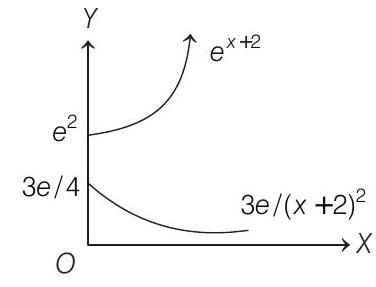Differential Equations 3 Question 6
6. A solution curve of the differential equation
(2016 Adv.)
(a) intersects
(b) intersects
(c) intersects
(d) does not intersect
Show Answer
Answer:
Correct Answer: 6. (a, d)
Solution:
- Given,
Put
On integrating both sides, we get
Since, it passes through the point
Now, to check option (a),
[given]
Thus, (a) is the correct answer.
To check option (c), we have

Clearly, they have no solution.
To check option (d),
i.e.
To check the number of solutions.
Let
Clearly, when
Thus,
Hence, there is no solution. Thus, option (d) is true.






